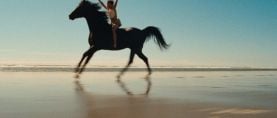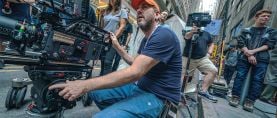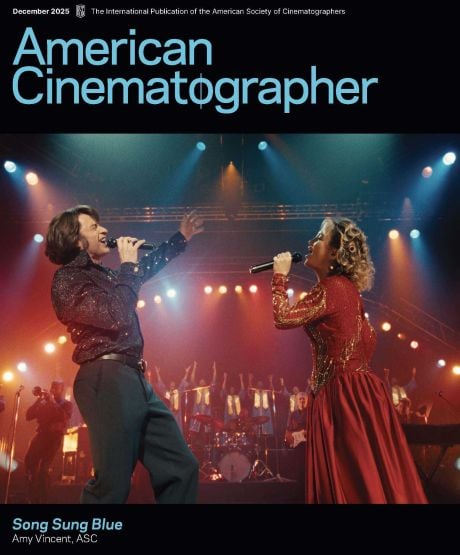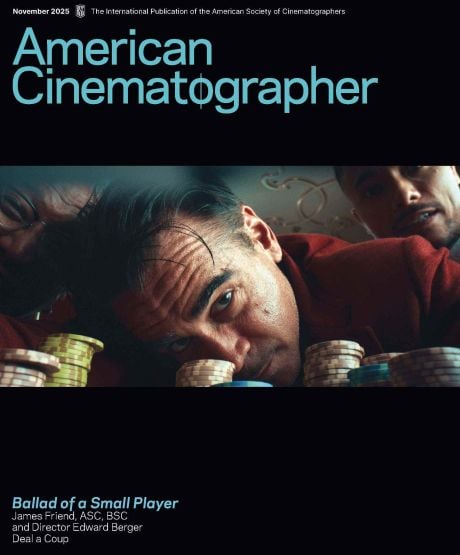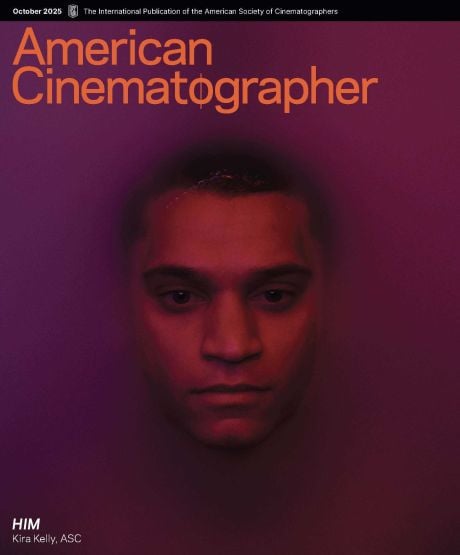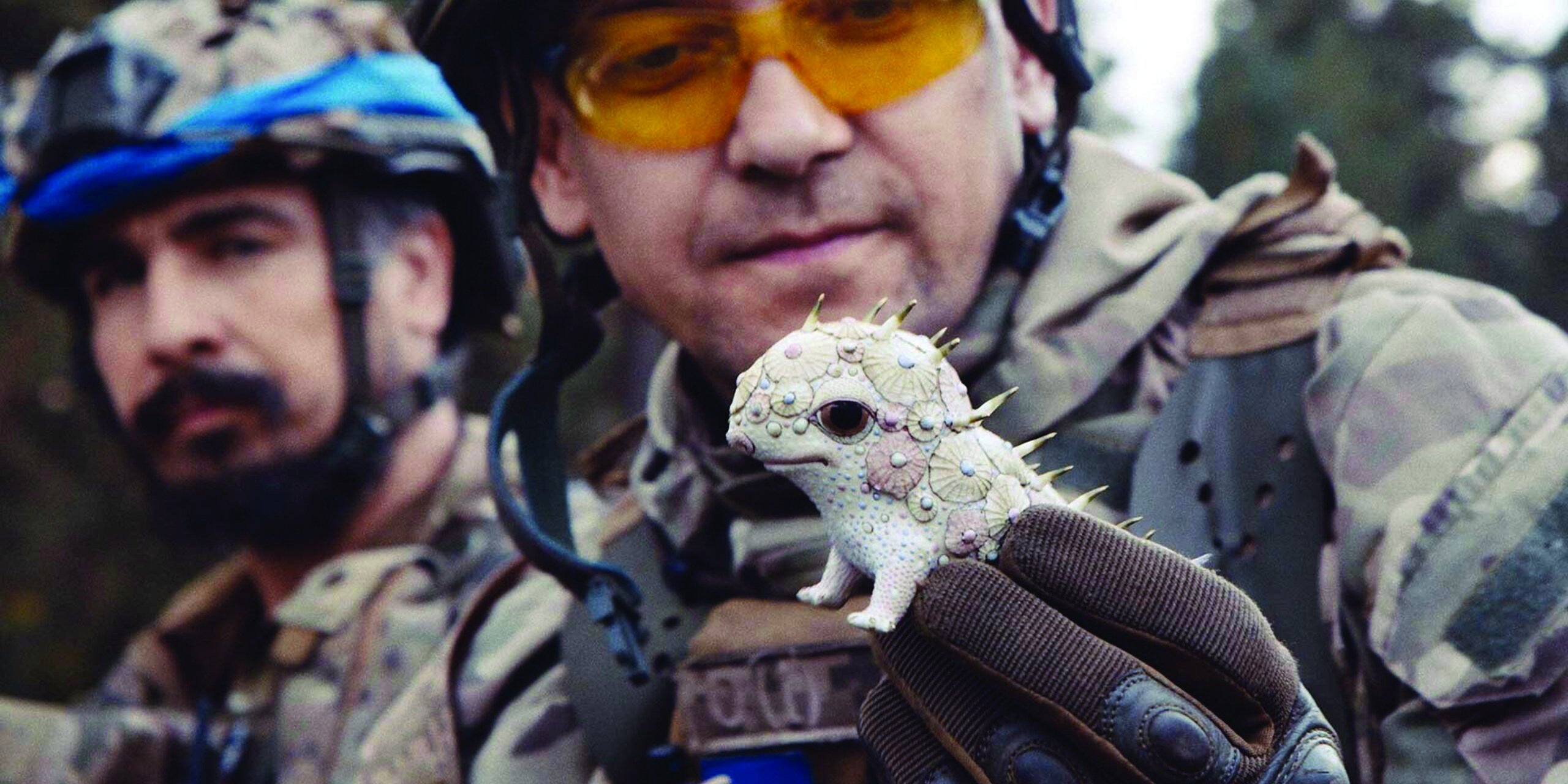
Art as Resistance: Porcelain War
The co-directors of the ASC Award and Oscar-nominated documentary feature reflect on their search for beauty in a time of war.
Filmed over the course of a year in and around the besieged Ukrainian city of Kharkhiv, Porcelain War tells the story of three artists who, rather than flee the brutal and violent invasion of their country by Russia, decide to stay and fight and continue making art. The film is remarkable in that all the footage was captured by the subjects themselves, in particular the sculptor-turned-director Slava Leontyev and the painter-turned-cinematographer Andrey Stefanov (who is nominated for an ASC Award for his work on the film).
The documentary feature grew out of an animation project based on Leontyev's creative partner Anya Stasenko's intricate ceramic paintings, but as the war pressed on, co-director Brendan Bellomo felt that there was a bigger story to tell, not about the war itself, but the importance of saving art and beauty in the face of total destruction. This theme resonated with the film's subjects, and they eagerly took to their new roles as filmmakers, seeing the process as a kind of "art in resistance" to the erasure of their culture and their lives.
In the year since its premiere at the Sundance Film Festival (where it won the 2024 Grand Jury Prize), much has been said about the making of Porcelain War, but while the conflict in Ukraine grinds on, the filmmakers continue to bring attention to the everyday citizens who keep spirit of their country alive.
Co-directors Bellomo and Leontyev recently joined AC in conversation to discuss the process of teaching (and learning) cinematography over long-distances, how the goals of the film have been achieved, and what is left to be done.
“The grammar of film holds the broadest storytelling power of any art form operating in our world today.”
— co-director Brendan Bellomo

American Cinematographer: Brendan, you were able to teach Slava and Andrey how to work with the cameras over Zoom. Could you talk about how exactly that was done? And then, Slava, what it was like to learn to shoot this way?
Brendan Bellomo: We were separated by 6,000 miles. We didn’t speak the same language at the time, though you’ll hear that Slava’s English has gotten very good, so we were working with an interpreter over Zoom, in a different time zone, a different country. They were in the largest conflict in Europe since World War II. Everything was against us.
At the very beginning, I asked Slava, “Do you know anyone who can just press the record button on a camera?” He sent me photographs of Andrey’s oil paintings — not postcard-style landscapes, but deeply moving, emotional masterworks. And I said, “This is a cinematographer. We just need to teach him how to be a camera operator.”
Cinema is an evolving language, and the grammar of film holds the broadest storytelling power of any art form operating in our world today. So I saw this as a unique opportunity: how do we help Slava and Andrey translate their artistic instincts into cinema? Because they already had them.
We got frustrated with the translator and started drawing. Slava and I communicated through sketches that turned into storyboards, into paintings we loved, into pieces of film. We realized we were fluent in this language of visual art.
That became our foundation to communicate as directors and cinematographer. We weren’t just covering the basics — how to turn the camera on, exposure, focus peaking—but talking about the language of cinema: close-ups and wide shots, the moving master, the 180-degree rule, combination shots, going from tight to wide, advanced concepts like constant backlighting, mixed color temperatures, all of that.
And then I started getting footage back from Andrey. This wasn’t just his first feature—this was the first thing he had ever shot with a camera. And Roll 1 had shots that made it into the final theatrical release. That’s how strong his instincts were. It’s a testament to both of them as artists. It was simply a new brush for them to paint with.
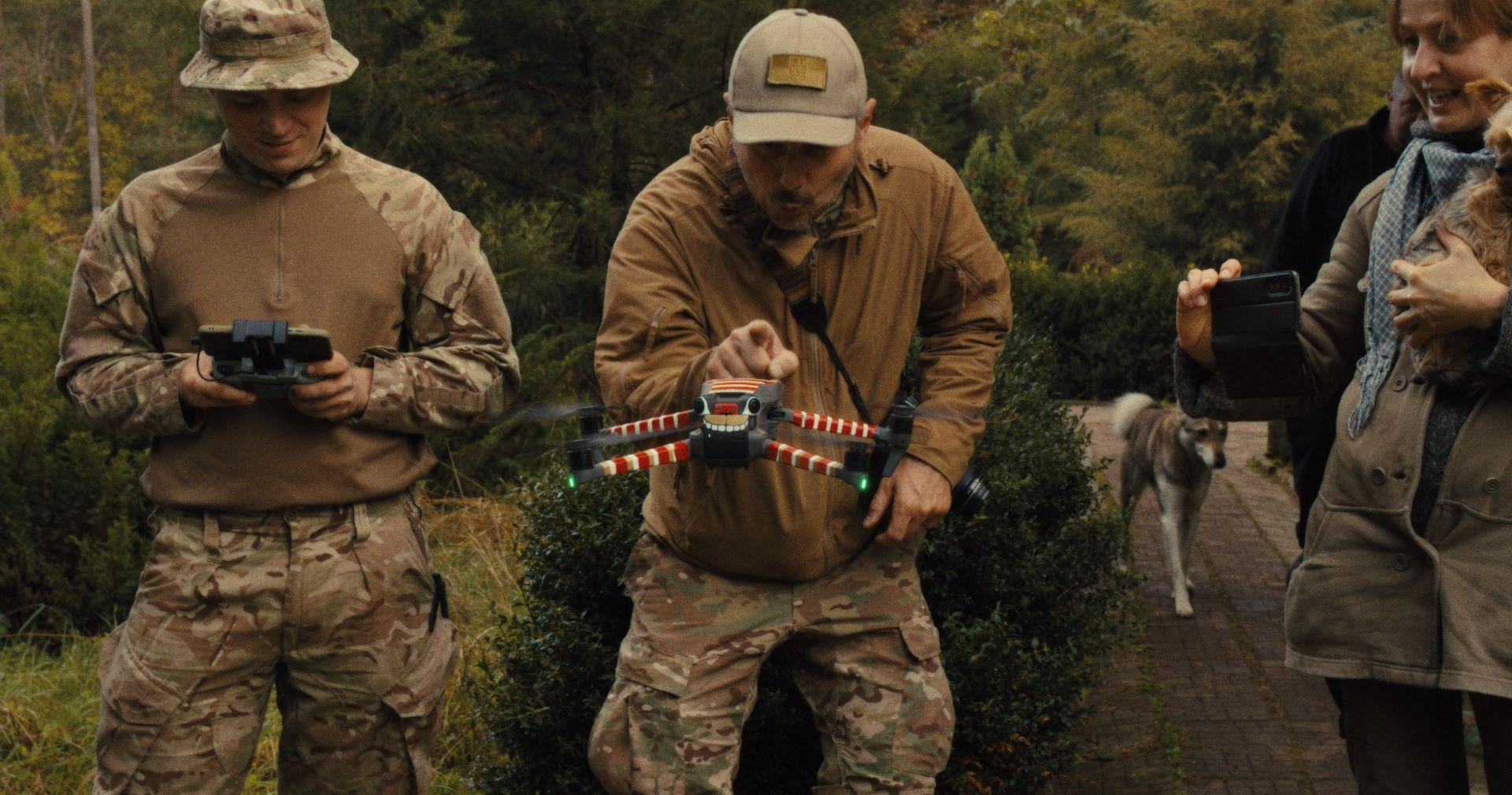
Slava Leontyev: For my part, I cannot explain how great Brendan’s tutorials were. I have an obsession with manuals. When I get a new device, I’ll read the whole manual cover to cover, every last dot.
But in this case, we had no time for manuals. We had no attention to spare. Because of Brendan’s tutorials, his explanations, his demonstrations, from the very beginning, the camera felt transparent to me. I was able to use it automatically. I was thinking about the image, about the subject I was focusing on — never about the camera itself.
Of course, sometimes I missed things. Sometimes I ruined footage. I had some experience as a photographer, but sound — that was completely new to me. And I was terrible. I ruined a lot. One time, I shot my assault rifle about a foot away from the camera and completely destroyed the internal microphones.
We had to get an external mic after that. And then sometimes I’d forget to connect it. Or I’d turn it off. Or I’d leave it at home. I created so many issues for Brendan with sound, I think the only good audio work I did was recording missile attack alarms. Every time there was an alert, I’d run to the balcony and turn on the recorder to capture it — the way the alarm echoed, the sound of missiles incoming, the explosions, the car alarms going off in response, the dogs barking after. That, and some sounds of nature — I recorded those decently.
I also made things difficult for Andrey. As a director with no experience, I had strict ideas. I’d tell Andrey, “I need this motion. I need this angle. Do it like this. Don’t do it like that.” And Andrey would just say, “Slava, relax. I already filmed what you wanted. Now I’m looking for something extra.”
And when I watched his footage, I quickly realized — his solutions were so much more interesting than my ideas. So, I let go. I stopped micromanaging. I forgot about the camera.
Sometimes I shot things that were personally meaningful, like macro footage. But usually, we were deep in our daily activity, in action, and I almost forgot about filming. We didn’t have time or the opportunity to construct scenes or stage anything artificial — except for painting the figurines.
Even then, sometimes I’d accidentally hit Anya’s hands or head with my lens while filming. But Andrey never did. He’s a Tai Chi master. His movement skills are incredible. We were really lucky to have him.
And Anya’s paintings gave us this incredibly metaphorical visual language. Her metaphors came from nature — dandelions, empty nests. And when we filmed nature, we shot it through the lens of her paintings. That connection helped us weave together such a wide variety of footage — from drone shots to macro images — into something cohesive.
“Culture is a vital part of resistance.”
— co-director Slava Leontyev
In the film, Slava, you, Anya, and Andrey talk about making art as resistance against the war, against disappearing. Now that it’s been a whole year since the film’s release, what do you feel you were able to accomplish with Porcelain War?
Leontyev: I’m happy now, because nothing in our movie looks like old news. I was really scared when we started filming. I thought, “Okay, all devastation looks the same.” And thanks to the bravery of reporters, we already had enough footage of destruction and violence. It felt senseless to film more of it.
I was terrified of making something that would feel like outdated news, something nobody would care about. So, we made a conscious decision to stay as far from news footage as possible. News gets old quickly, but beauty never does. And I think we succeeded in that — we focused on human beauty, the beauty of nature, because it’s much more important to show what could be destroyed than just to document the destruction itself.
Bellomo: Now that we’ve shared the film all over the world, we’re seeing how audiences connect with it on a universal level. This story takes place within Ukraine’s borders, but it could be anywhere that democracy and freedom are at risk. More than ever, those ideas are under threat worldwide.
What we tried to do was remove labels. If you see something in the news, you automatically categorize it: “that’s a soldier,” or “that’s a refugee.” But with Porcelain War, we wanted to strip those labels away and use cinema to place you in someone else’s shoes, to let you feel their emotional truth. That’s the power of filmmaking.
The response from audiences has been incredible — people are realizing this conflict affects all of us, and yet the film is nothing like what they expected from a war movie. It’s rooted in hope, in beauty, in humanity. That has surprised people in the best way, and we feel so grateful for that reaction.
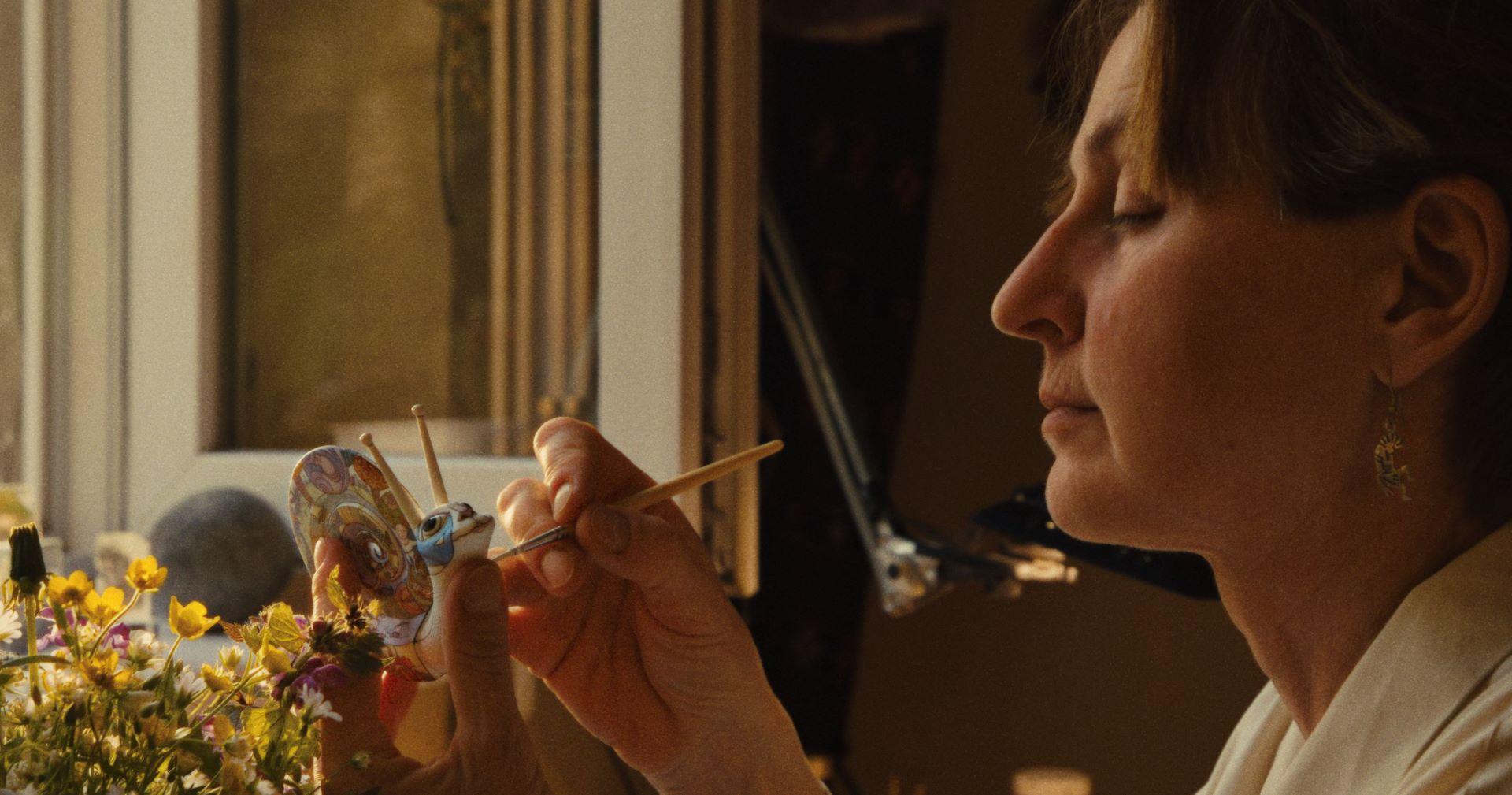
Leontyev: Porcelain — our favorite material — feels so fragile, so easy to destroy. That’s why we use it as a metaphor for Ukraine. It’s easy to kill our people, damage our culture, destroy our cities, but our identity, our culture, is indestructible.
The most important ideas always survive, no matter the times. That’s why we made this movie. For me, our responsibility as artists and filmmakers is to bring hope and inspiration. And the good news? Resistance is possible. Culture is a vital part of resistance.
At first, I thought of the camera as just another brush to paint with, because when I picked up my camera, someone else picked up a rifle in my place. But then someone said to me, “Now you’re fighting in your own way. Now you have a much more impactful weapon than a rifle.” That wasn’t my opinion — that was the perspective of a sniper.
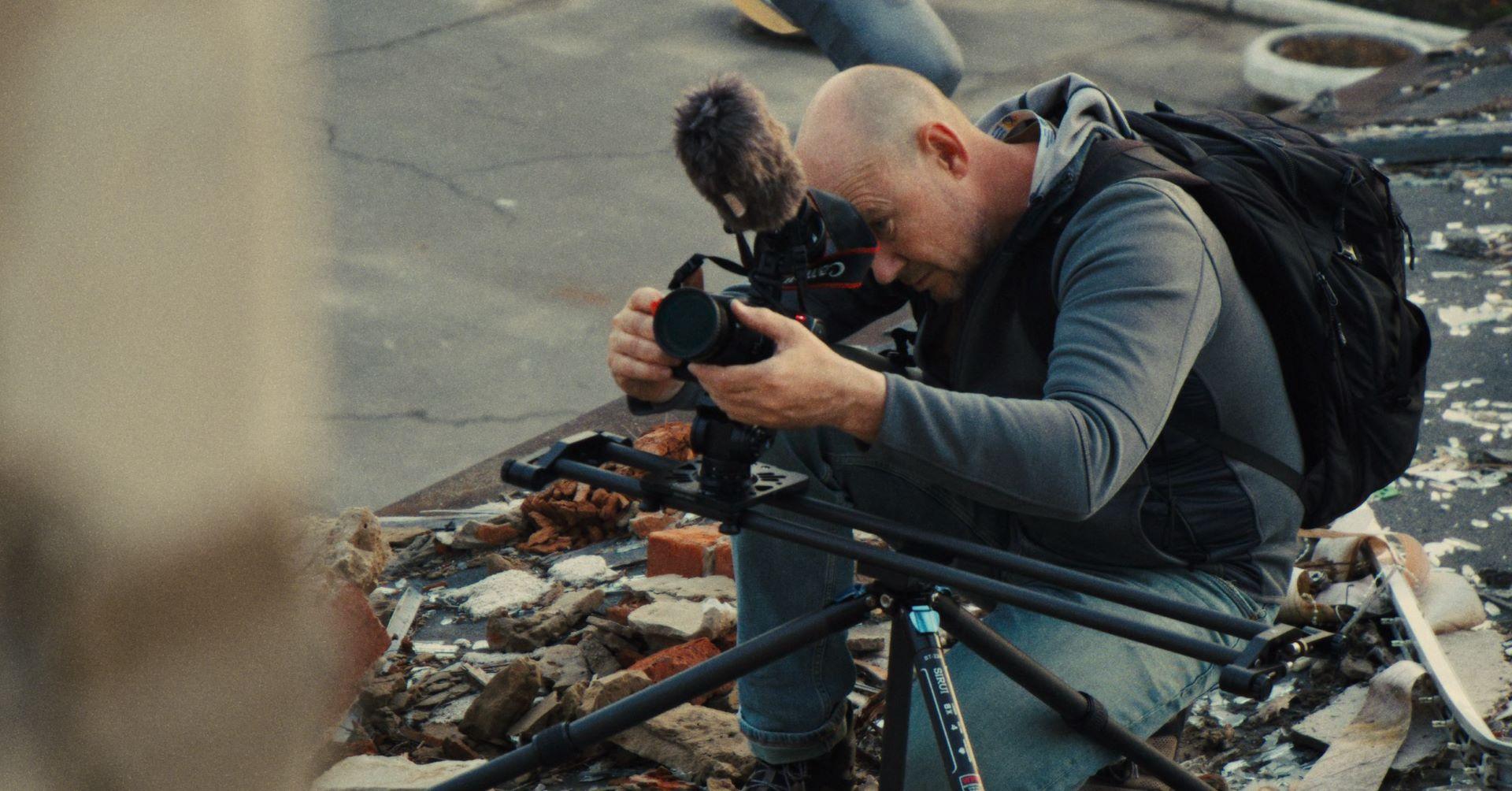
Can you elaborate on that? How can the camera be a more impactful weapon than a rifle?
Bellomo: I can share something that members of Slava’s unit told me. We started with one camera. By the time we were in full production, we had sent 15 cameras — compact cinema cameras, body cameras, drones. And the members of Slava’s unit wanted to learn how to use them.
We talked about “why” — why they wanted to document what was happening. They said, “If we can capture what we go through every morning when we wake up, maybe somebody else won’t have to be in our shoes.”
But it wasn’t just about creating a record to prevent history from repeating itself. It was also about preserving a sense of soul, of humanity, of creativity, in the middle of all this destruction.
Filming wasn’t an escape — that wasn’t possible — but it was a way to hold on to a piece of themselves. And something remarkable happened: after their missions, they’d have several days of psychological decompression, with different workshops to help them process what they’d been through. We shared a rough cut of the film with them, and they told us that watching what they had captured was more restorative, more helpful than any of those official services. To me, that’s a testament to the power of cinema. That’s what it means to bring a camera into this kind of situation.
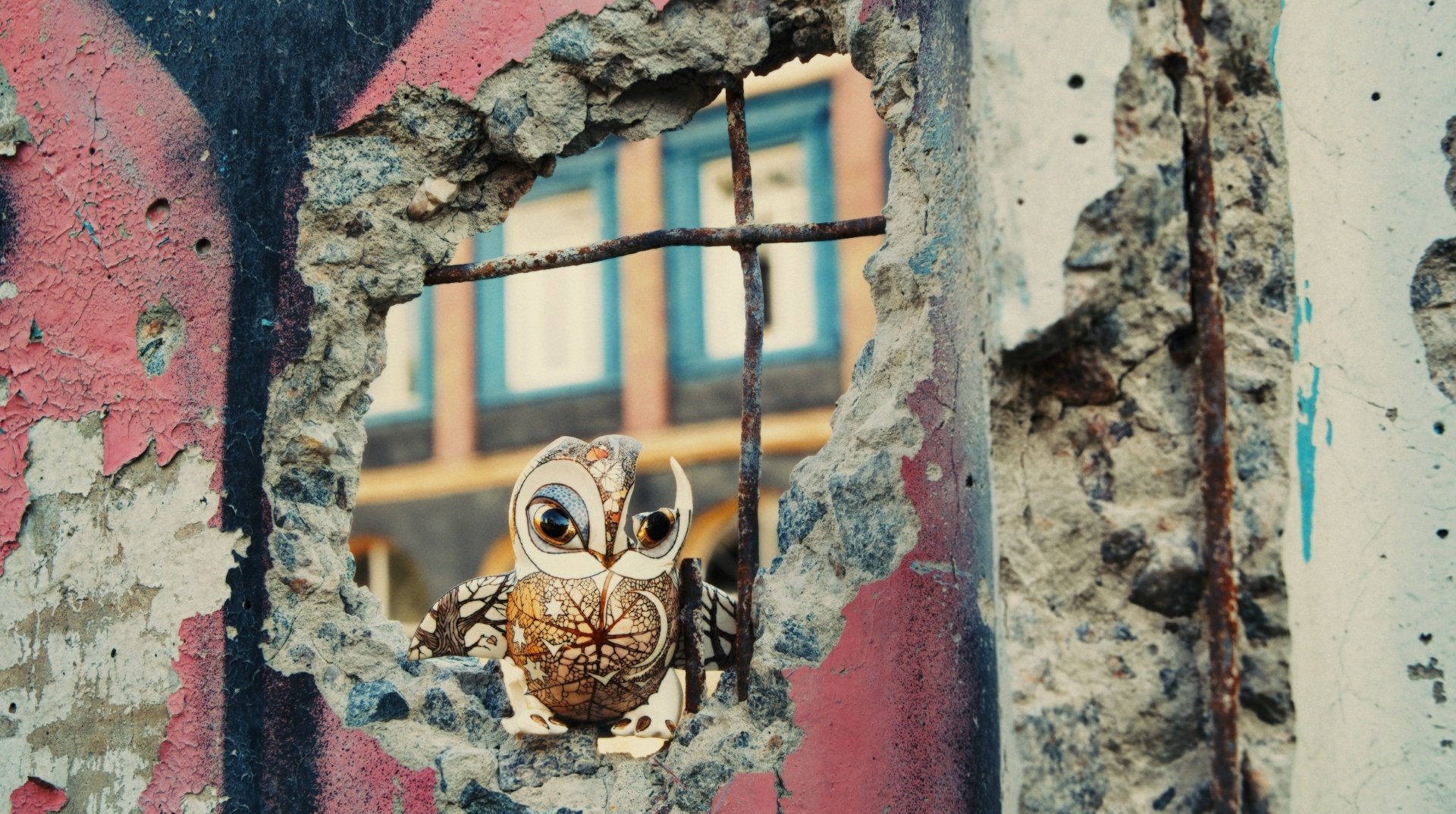
Leontyev: In Ukraine, war is right outside your door. It’s a surreal experience, but it gives you a specific perspective — you feel how fragile everything is. Every tiny flower, every person, every building, every massive tree… we filmed them all as if it were their last day of existence.
But this isn’t just some natural disaster. It’s a battle between democracy and a totalitarian aggressor. Our goal in Ukraine is simply to survive, to defend our culture and preserve our identity. But this fight isn’t only about Ukraine. This frontline stretches across the entire world.
You can see it in totalitarian countries, where brave women in Iran are protesting despite immense danger. You can see it even in well-established democracies, where dangerous ideas are creeping in, pushing societies toward more authoritarian ways of life. I hope our experience matters, and that our cameras help share it with the world — along with our hope and inspiration.
Have you continued to film since finishing the documentary?
Leontyev: We’re on a continuous journey of supporting the film. It still needs us, and we never have enough time — even for porcelain — but we’re working.
Andrey, our cinematographer, is at an interesting point. When the war broke out, he stopped painting landscapes. Now, he’s trying to return to painting with his new cinematographic experience, and he’s explained to me how much his imagination has changed because of it. I hope it leads to something truly new — an evolution in his style. That would be perfect.
Since it's been a year since the film came out, and you’ve all spoken at length and in such detail about your experience making it, is there anything left to say that hasn’t already been said?
Bellomo: The first thing that comes to mind — and maybe this is unexpected — is that Slava and Andrey are artists first and foremost. To be an artist means to experiment, to explore.
Andrey only likes to paint at certain times of day — magic hour, when the light is just right. He brought that same instinct to cinematography. He and Slava would go out and try something with the camera, then we’d review the dailies together — sometimes that night, sometimes the next morning over Zoom. We’d mark things up, and discuss: “What if we got the camera lower?” “What if we captured this reflection?” “What if we used the way light bounces off ice on a frozen lake?” And they’d go back out, or they’d wait for the lake to freeze again, and they’d try something new.
And the whole time, I kept thinking, “they’re choosing to do this in the middle of an active war zone.” There’s no clear front line. They’re under attack across Ukraine. And yet, they’re choosing beauty.

Another thing that happened was early on, they started filming these macro shots of nature, with so much detail, and so much care. And someone involved in the project at the time said, “We’re not making a nature documentary. What is this?”
But I realized: Slava and Andrey had no concept of B-roll, no idea of cutaways or filler shots. There was no shot list telling them to grab some extra footage of trees. This is simply what they thought was important — even as bombs were falling around them. This was what was inspiring them.
It made sense later when we looked at Anya’s art — her porcelain work is full of nature, little animals. Her work is about innocence, about honoring something that has no control over its circumstances, and putting that into context.
One of the ideas in the film — and in cinema overall — is that a camera can act as both a microscope and a telescope. You can look at something vast from far away, or you can focus on something tiny, up close. But no matter what, when the image is projected in a theater, it carries equal weight. That’s an enormous responsibility.
Slava and Andrey operated on that full spectrum. They focused on things smaller than us — animals, nature, things we must care for. And they focused on things larger than us — broader concepts, the land, the country. They created abstractions and humanizations at both scales.
That level of artistic thinking doesn’t always come through when we just talk about how hard it was to make the film, or the logistics of shooting during a war. But the conversations we had in the middle of it all — the artistic discussions, the creative choices — those were focused on these ideas. How do we bring them forward in the film? How do we weave them together? That was a joy.
You'll learn more about wartime filmmakers in Ukraine in this report.
